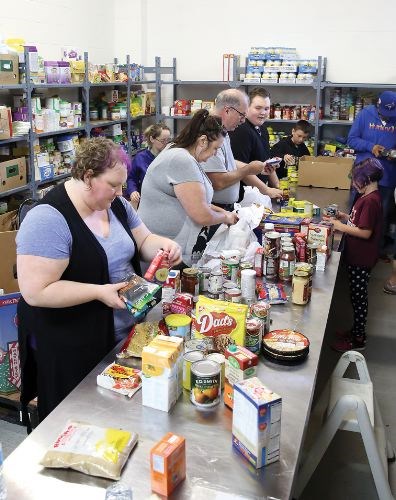In previous years the argument has been made in newspapers, other media outlets, and by lobbyists to eliminate or reduce the charitable tax benefit given to faith communities. Some of the points are very understandable. Faith community buildings are often located in prime locations, occupy downtowns, have parking lots used only on Sundays and evenings, have greenspace that could be used for development, in most cases they forgo property taxes, and receive a lot of citizen's income that could otherwise be spent in the local economy.
Data from the Public Economic Data Analysis Lab (PEDAL) of McMaster University shows that according to T3010 forms from 2013 the City of Prince George has 76 faith organizations with a combined budget of $29,660,620.
2016 a study funded by the University of Toronto and the think tank Cardus used this data and a model from a study done in the city of Philadelphia to calculate the "Halo Effect" that these faith communities have. Does the value-added amount that comes from these communities outweigh the monies they receive and the taxes they forgo?
These findings were published on the project's website, www.haloproject.ca and the answer to the question is a resounding 'Yes.' Their research and analysis concluded that for every $1 in a faith community's budget it produces $4.77 of "halo benefit" or social capital.
These figures include things such as the savings to a city's storm sewer system due to the permeable ground of a congregation's greenspace, community garden plots, playground equipment, employing staff who contribute to local economy, funding private schools which relieve school board budgets, reduction of divorce separation costs due to divorce prevention, grief counselling, suicide prevention, making space available to groups like Alcoholics Anonymous and Narcotics Anonymous for little to no fee, and provision of basic needs such as food banks and clothing drives.
Another local example is the number of faith communities in Prince George who sponsored refugee families, which is an endeavor that costs over $40,000 for a family for a year. Many of the refugee families that settled in Prince George were sponsored by faith communities who either paid for 50 per cent of the costs for the first year, or 100 per cent of the costs if sponsored privately. Church communities also came alongside government sponsored refugees who had no support once settled in their new, but temporary homes.
Using the numbers of the Halo Project, the value-added to our social life in Prince George comes to a total halo benefit of $141,481,157. This is an amount that far outweighs the income received from their members, and the tax benefits given to these individuals and communities.
Is this be something that faith communities should be proud of?Absolutely.Is this something that the general public should be proud of too?Absolutely.Because these measurements are not a matter for mere pride. But it shows the fruit of what happens when the church and when other faith communities live out a public faith for the common good.Faith organizations are not self-serving clubs, but are counter-cultures for the common good.So rest assured: faith communities are not a tax scheme or a burden to public services, but an essential public good.



